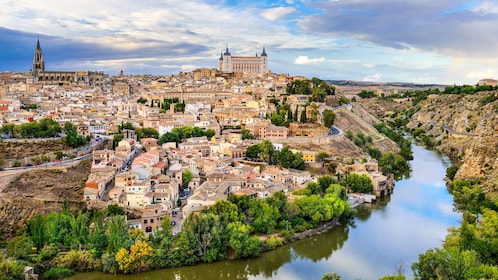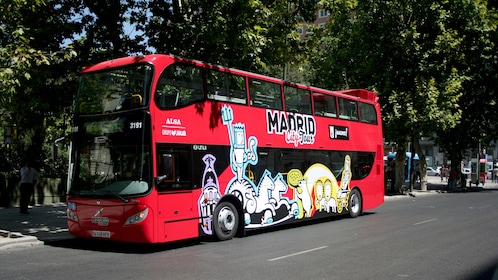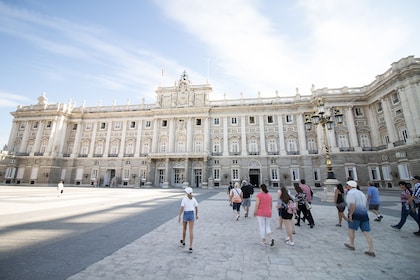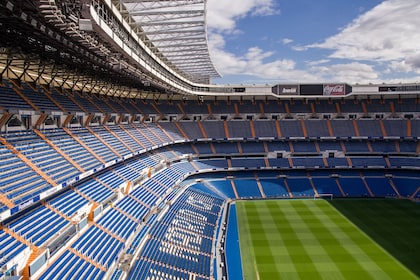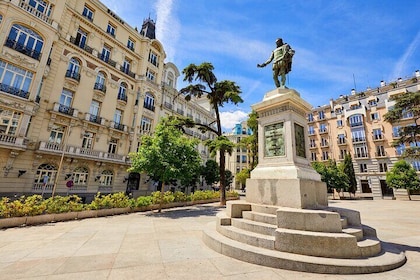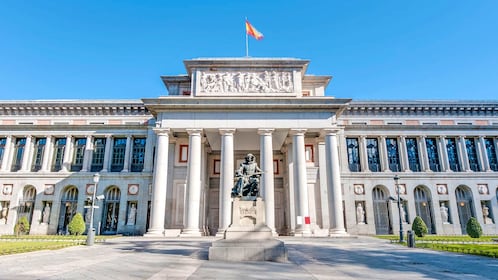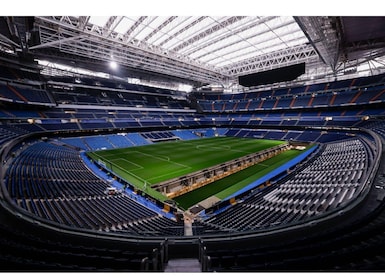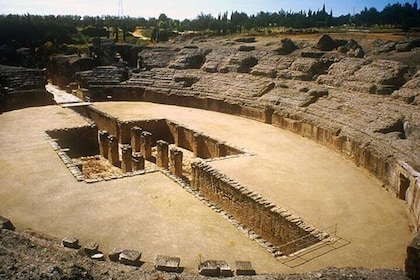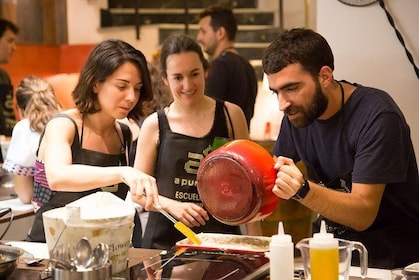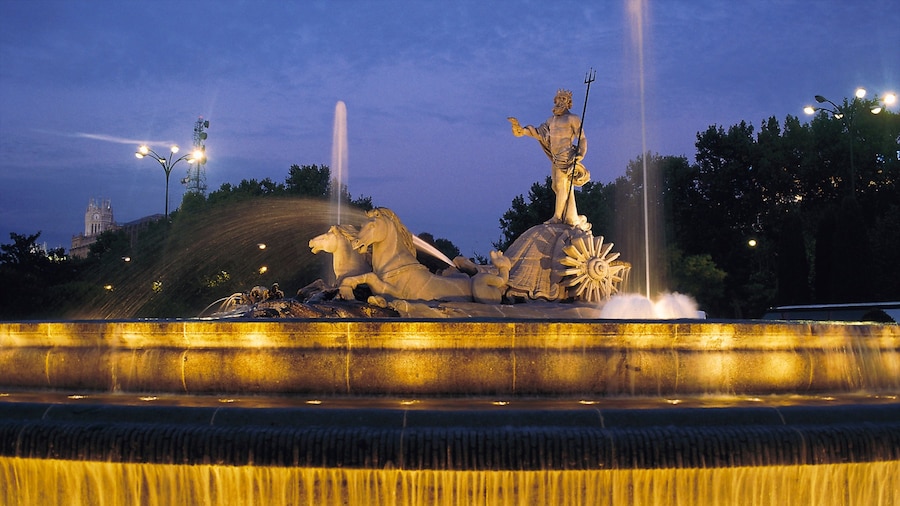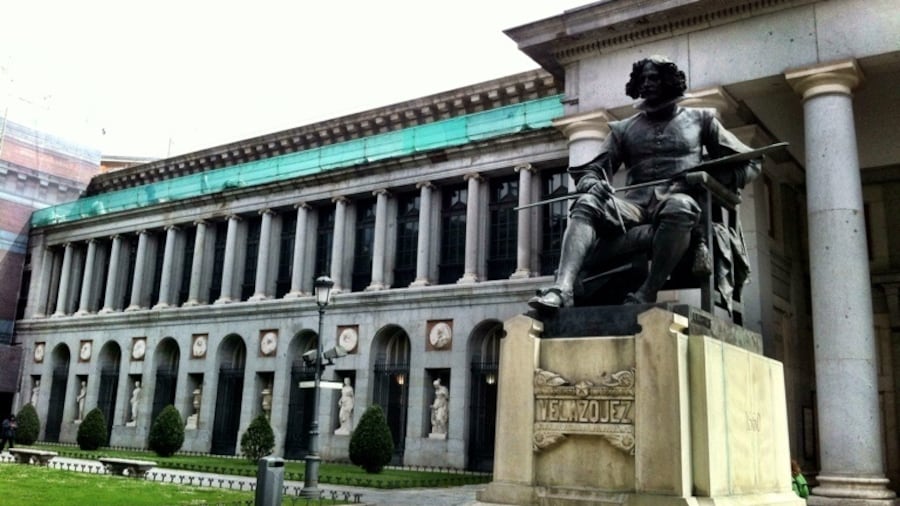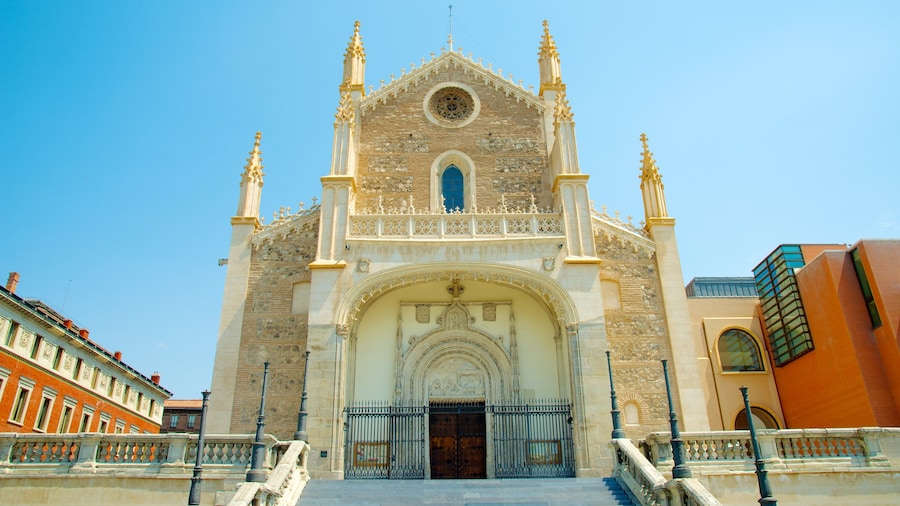Take photos at the iconic Fountain of Neptune before exploring the treasure trove of historic sites and gorgeous buildings that surround this famous Madrid square.
The Plaza de Cánovas del Castillo is one of the most recognizable parts of Madrid, but use its real name in conversation and you may be met with a blank stare. This pretty, wide-open square is most commonly known as the Plaza de Neptuno, after the famous Fountain of Neptune (Fuente de Neptuno) which dominates it. Come here to see this impressive Madrid sight in person, then take advantage of being close to a wide array of other unmissable attractions.
Be sure to bring a camera, as the Fountain of Neptune is a spectacular sight. Water flows constantly over the several layers that make up its enormous circular base. In the center of the fountain a statue of the god of the ocean, Neptune, rides a giant chariot made of a shell, pulled by two leaping horses. The fountain was built in the 1780s and its arresting neoclassical form is the perfect complement to the many grand buildings nearby which follow a similar style.
After visiting the fountain, explore some of these historic sites, as well as the other diverse cultural offerings the area provides. The Plaza de Cánovas del Castillo is within the “Golden Triangle of Art,” a section of Madrid nicknamed for its three famous galleries, the Museo del Prado, the Museo Nacional Centro de Arte Reina Sofía and the Thyssen-Bornemisza Museum. Visit at least one of these sprawling galleries if you can, but be aware that visiting all three in one day is quite ambitious due to their sheer size.
Afterward, relax outside and admire the façades of the gorgeous buildings near the plaza. These include two of Madrid’s most upmarket hotels, the Ritz Hotel and the Palace Hotel. Wander the long, leafy Paseo del Prado, which meets the plaza. This is the place for some great people-watching. Look for attractions such as the CaixaForum gallery as you go. This street is rich with art and history.
To reach the Plaza de Cánovas del Castillo, get the subway to Banco de España. It’s less than a 10-minute walk to the plaza, the gateway to enough sights and activities to fill many afternoons.

